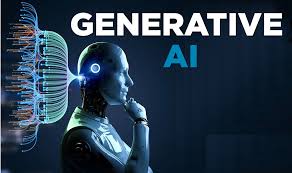info@gladsme.in
+91.8891968718
The Rise of Generative AI: Transforming Creativity and Innovation
The Rise of Generative AI: Transforming Creativity and Innovation

In the ever-evolving landscape of artificial intelligence, one of the most fascinating advancements is the rise of generative AI. This branch of AI focuses on creating systems that can generate content—be it text, images, music, or even entire virtual worlds—that mimics human creativity. From revolutionizing industries to enhancing everyday applications, generative AI is transforming the way we think about creativity and innovation.
What is Generative AI?
Generative AI refers to algorithms, such as Generative Adversarial Networks (GANs) and Variational Autoencoders (VAEs), that can create new data similar to the data they were trained on. Unlike traditional AI that follows explicit instructions, generative AI learns patterns and structures from input data to generate new, original outputs. This capability makes it a powerful tool for various applications, including art, design, entertainment, and more.
Applications of Generative AI
Art and Design: Generative AI is making waves in the art world, where it is used to create stunning visual art, design new products, and even produce fashion items. Artists and designers use AI tools to explore new creative horizons, blending human intuition with machine precision.
Entertainment: In the entertainment industry, generative AI is used to generate music, write scripts, and create immersive virtual environments. This technology enables creators to produce unique content at a scale and speed previously unimaginable.
Healthcare: Generative AI has significant implications for healthcare, including drug discovery and personalized medicine. By analyzing vast datasets, AI can generate potential new drug compounds and predict how different treatments might work for individual patients.
Marketing and Advertising: Marketers use generative AI to create personalized content for advertising campaigns. This includes generating targeted email content, social media posts, and even entire marketing strategies based on consumer data.
Gaming: Game developers leverage generative AI to create dynamic and engaging game worlds. AI can generate levels, characters, and storylines, providing a more personalized and immersive gaming experience.
Challenges and Ethical Considerations
While generative AI offers numerous benefits, it also poses challenges and ethical considerations. One major concern is the potential for AI-generated content to be used in deceptive or malicious ways, such as creating deepfakes or spreading misinformation. Additionally, there are concerns about intellectual property rights and the impact on jobs traditionally held by creative professionals.
To address these issues, it is crucial to develop robust ethical guidelines and policies that ensure the responsible use of generative AI. Transparency in AI development and usage, as well as public awareness, are essential in mitigating potential risks.
The Future of Generative AI
The future of generative AI is incredibly promising. As technology advances, we can expect even more sophisticated and versatile applications. AI-generated content will become increasingly indistinguishable from human-created content, leading to new possibilities in creativity and innovation. However, with these advancements comes the responsibility to navigate the ethical landscape carefully and ensure that AI is used for the greater good.
Generative AI is not just a technological breakthrough; it represents a paradigm shift in how we approach creativity and problem-solving. By embracing this technology, we can unlock new levels of human potential and drive innovation across various fields.
Related Blogs

The Importance of Data Structures in Software Development
Read More...
Exploring Machine Learning Algorithms: A Beginner's Guide
Read More...
The Evolution of Programming Languages: From Assembly to Rust
Read More...
Understanding Big O Notation: A Guide for Developers
Read More...Subscribe for our Newsletter
Subscribe to elevate your software game! Stay updated on the latest trends, coding insights, and exclusive promotions with our newsletter.
